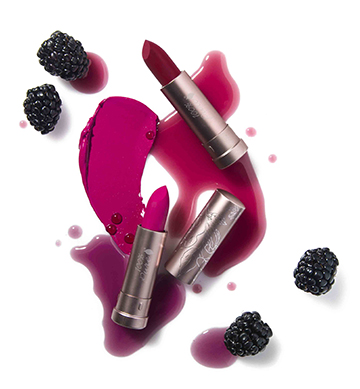In this short, but informative video, I learned that, less than 3% of Americans get the recommended minimum daily fiber intake. This clearly indicates that most Americans are fiber deficient!
- Recommended Daily Fiber Intake
- The National Fiber Council (NFC), recommends a daily fiber intake of 32 grams for a healthy adult.
Though I found this statistic rather shocking, it’s really not all that surprising! When you take into consideration what the average American eats, it’s evident as to why there’s a fiber deficiency.
The Standard American Diet (SAD) is essentially a demineralized diet comprised of highly processed/refined foods, heavy amounts of animal proteins and fats, and sugary drinks. These types of foods do not contain fiber!
With that said, today I’ll be sharing some simple ways you can up your daily fiber intake.
But first, let’s take a quick look at the types of dietary fiber.
Types of Fiber
There are two types of fiber that you should be getting from your diet. And because they have different functions and health benefits, it’s important that your diet includes both.
(1) Soluble Fiber – A soft fiber that dissolves into a gel-like substance. As a result, it slows down digestion allowing for increased absorption and assimilation of nutrients. It also makes you feel full for a longer period of time, which may be helpful for weight loss and maintenance. Sources of soluble fiber include fruits, vegetables, and legumes.
(2) Insoluble Fiber – A coarse/rough fiber that does not dissolve. It acts like an intestinal toothbrush, helping to “brush” the walls of your intestines. It aids in the regulation of healthy bowel movements and prevents constipation, by helping food to move through your digestive tract. Insoluble fiber is found in fruits, vegetables, nuts, seeds, legumes, and whole grains.
Most plant-based, whole foods contain both soluble and insoluble fiber.
Fiber is also a prebiotic for the friendly bacteria that live in your gastrointestinal tract. This means that a fiber-rich diet promotes and supports a healthy and happy gut!
So we know that dietary fiber is an important part of a healthy diet. And in addition to aiding in digestion, it can be helpful in the prevention of health-related problems like:
Heart Disease
Diabetes
Diverticular Disease
Constipation
Obesity
- Quality Food for Better Health
- Always choose the best quality foods that you can afford. This includes foods that are:
- Non-GMO
- Organic
- Locally Grown
- Homegrown
- Wildcrafted
Simple Ways to Get More Fiber in Your Diet
Focus on eating a variety of fresh fruits (low in sugar like berries), vegetables, nuts, and seeds. Whole grains contain fiber, but they also cause a high rise in blood sugar levels and are very acid forming in the body. Additionally, through the work of Dr. William Davis, the author of Wheat Belly, we learn that eliminating wheat and grains from the diet has incredibly profound health-promoting benefits. I encourage you to check out his research.
Another consideration to keep in mind is that heat destroys fiber. So, it’s also important that you include raw plant-based whole foods into your diet whenever possible. You can also experiment with different cooking techniques like steaming, lightly sautéing, blanching, etc. to retain more of the fiber.
Here are a few ways you can start getting more fiber into your diet:
(a) Simply start adding them to the foods you’re already eating. Always try to think of ways you can make whatever you’re putting into your mouth more fiber-rich.
(b) Start replacing meals or making food substitutions that will provide you with more fiber.
(c) You can do a combination of both (a) and (b).
(d) Establish a plant-based diet.
Below, I’ve listed some suggestions and ideas to help you get started.
Ways to Add In More Fiber-Rich Foods …
Add fresh berries to your morning bowl of cereal or yogurt.
Top your omelet with fresh salsa, shredded lettuce, and slices of avocado.
Add a handful of fresh greens like spinach or kale to your fruit smoothie.
Have a fresh green vegetable salad with your lunch and/or dinner.
Add fresh sprouts to salads, sandwiches, burgers, wraps, and pizza.
Have a handful of nuts for a healthy snack.
Sprinkle seeds and nuts on casseroles and other entrees.
Replacing Meals and Making Food Substitutions …
Don’t be afraid to try new foods and recipes! I definitely encourage you to prepare as many meals at home as you can. There are plenty of healthy, tasty, easy, and fun recipes you can make! Get the entire family involved!
Have a green smoothie for breakfast or lunch.
Replace unhealthy snacks like chips and crackers with your favorite veggies dipped with hummus or almond butter.
Eat a vegetarian bean dish like bean burritos with fresh salsa and guacamole or chili for lunch or dinner two or three times a week.
Try a veggie burger or sandwich.
Make your own nut and seed butters.
Make you own dips and spreads using your favorite nuts, seeds, spices, and vegetables.
Make your own condiments like ketchup, bbq sauce, mustard, relish, mayonnaise, etc. using fresh wholesome ingredients.
Learn how to easily grow sprouts in your very own kitchen to be used in salads, wraps, sandwiches, and burgers.
Use lettuce and other large leafy greens like chard and kale instead of bread or tortillas.
Try making cauliflower ‘rice’ instead of regular rice.
Use a vegetable peeler or spiralizer to make your own zucchini ‘pasta’ instead of regular pasta.
Pack your own lunch instead of eating out. Make a veggie wrap or a salad to take to work or school. You could also take leftover zucchini lasagna, for example, from dinner the night before.
Replace your evening bowl of ice cream with a bowl of fresh berries or blend your favorite nut milk with a handful of frozen berries for a healthy and tasty treat.
- Add Healthy Fats to Your Meals
- Tip: When you make vegan and/or vegetarian meals like wraps, salads, burgers, sandwiches, and other entrees, include sources of healthy fats like avocados, nuts, and seeds. This will supply your body with a long lasting source of energy, and also provide satiety.
What’s a Plant-Based Diet?
A diet that is centered on primarily plant derived, whole foods. This doesn’t mean that you have to be a vegan or vegetarian. You can establish a healthy plant-based diet that includes small amounts of animal proteins and fats.
Plant-Based Food Sources Include:
Fruits
Vegetables
Nuts
Seeds
Legumes
Grains – Don’t forget to check out Dr. William Davis’s work.
Superfoods/Superherbs
Raw & Living Foods
A plant-based diet makes it incredibly easy to get plenty of fiber in your diet!
I hope you found this post helpful!
Best of Health,
Shahné
P.S. What is your favorite vegetarian or vegan meal and/or snack? Please comment below 🙂


















